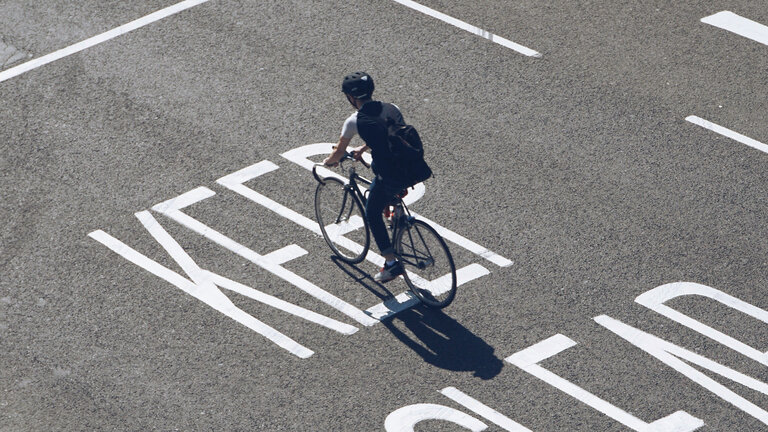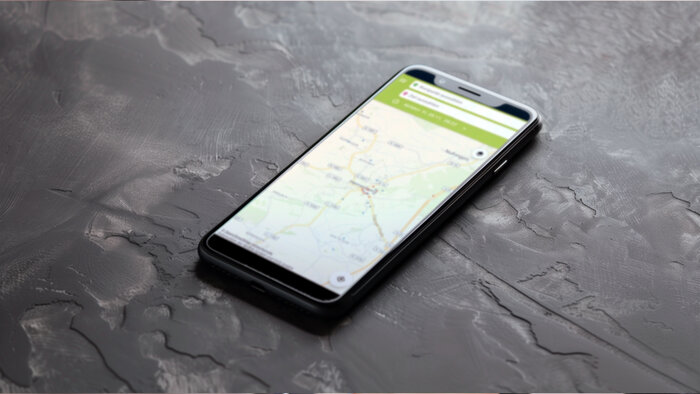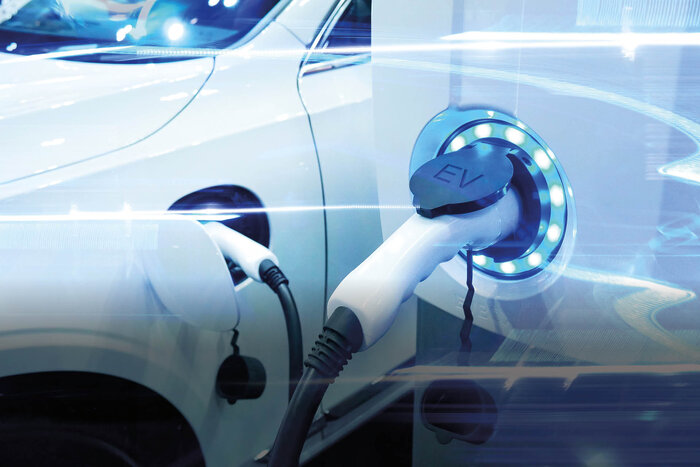Urban mobility

Motivated cyclists who are made downright uncomfortable. In Cologne, traffic satisfaction is at an all-time low compared to the rest of Germany, and this has been the case for many years. Even so, the city has great potential!
What is urban mobility?
Urban mobility refers to all the means and routes of transport that people can use to get around a city. The aim is to make urban mobility more sustainable.
Bicycle infrastructure
A cycle lane across the city, clear traffic routes, developed cycle paths, and a bridge exclusively for two-wheelers. If you come from a bike-friendly city like Constance, this kind of infrastructure is the norm. In places less focused on cycling, such as Cologne, reality strikes and the norm proves to be a luxury.
There are cycle paths that are far too narrow and just end suddenly, and there are obstacles such as parked cars, e-scooters, pedestrians, or even cyclists traveling the wrong way. That is if there are even cycle paths at all. In some cases, riding skills are also required on multi-lane car roads, often with a streetcar behind you. This can quickly make your head spin. Not just from inhaling the exhaust fumes, but mainly from confusion and tension. The obligatory helmet on your head is only a small consolation because unfortunate encounters frequently take place with the dominant mode of transport in Cologne and many other major German cities: the car.
Bicycle dilemma in German cities
The cycling experience reflects a problem for which the foundations were laid in the 1950s. The city of Cologne was rebuilt as a car-only city, following the example of large American cities. Cyclists were neglected during the planning works as it was assumed that soon everyone would only be traveling by car. Now, even though cyclists have not disappeared, the daily routine of getting on their bikes is a certain act of bravery.
The number of cyclists involved in (fatal) accidents is increasing every year, as can be seen in the traffic accident statistics of the NRW (North Rhine-Westphalia) police. According to Christoph Schmidt, Chairman of the ADFC (Allgemeiner Deutscher Fahrrad-Club Köln [General German Bicycle Club Cologne]), the conflicts on Cologne’s roads are mainly due to the inadequate infrastructure, as only three percent of the traffic area is for cyclists.
The proportion of active road users on two wheels is much higher. A comparative study by the DLR (German Aerospace Center) shows that the proportion of cyclists in Cologne is slightly above the national average at 18 percent. In short, cycling is popular among Cologne residents as 66 percent of those surveyed enjoy cycling. The dissatisfaction relates primarily to the transport infrastructure: Cologne is one of the worst performers in the ADFC’s “Cycling Climate Test.”A slight improvement from a score of 4.4 in 2020 to 4.2 in the latest study in 2022 gives some hope.
The citizens are motivated, so it is “only” a matter of adapting the city and its infrastructure accordingly. In comparison, Stuttgart has the opposite problem. There, citizens are more reluctant to cycle than in any other major German city and only account for seven percent of traffic. Therefore, the infrastructure must first be created in order to motivate citizens to cycle.
Pop-up cycle paths: a quick solution to the problem?
In 2016, the city of Cologne presented a concept that aims to increase the share of cycling and public transportation and reduce the share of cars. It has been criticized in the press and by the people of Cologne themselves for its sluggish implementation. They have been repeatedly drawing attention to the shortcomings since the 1970s.
In addition to regular bicycle demos, pop-up cycle paths were organized as recently as June 2021. As the name suggests, these appeared suddenly in the city and were intended to show how cycling in Cologne could work without much effort. Flower pots and stands were used to quickly convert car lanes into cycle lanes. The experiment proved to many that it is not the possibilities that are lacking, but the desire to realize them.
Urban mobility concept
Markus Schmidt, mobility expert at Drees & Sommer, explains that “a city must always be understood as a self-contained system when it comes to infrastructure planning.” If something is changed in one place, this also entails adjustments in other places.
Otherwise, the system would no longer work. So, if the traffic rings are made single-lane, as with the pop-up cycle paths, the traffic lights, and the possibility of turning right at the junction, for example, would have to be re-coordinated in addition to the fairly simple road layout. A cycle ramp would have to replace the steps on Cologne’s Südstadt Bridge and a curb would have to be lowered in some places. These are small individual measures, but on the whole they are connected and therefore always need to be considered.
“In terms of implementation,” says Markus Schmidt, “this means that each measure has to be planned, tendered, commissioned, realized, and invoiced individually.” So, it is not just a case of drawing a few new lines, but also a lot of administrative work surrounding the actual implementation. According to Schmidt, however, it is the only way to change the “city” system for the better. And ultimately, it is unavoidable. Not least because the transport transformation is also essential.
Mobility transformation
Drees & Sommer is already entrusted with the project coordination of corresponding measures in Stuttgart. The experts can go even deeper and support cities such as Stuttgart and Cologne or neighborhoods and metropolises in developing and implementing new mobility concepts from scratch.
The mobility transformation requires consistent and solid planning. After all, making a city like Cologne more bike-friendly and thereby moving more people away from cars creates space, a better attitude to life and contributes to climate protection. This is no longer a project for the future, but for today, for the here and now.
Article was edited // Original contribution from November 2021



